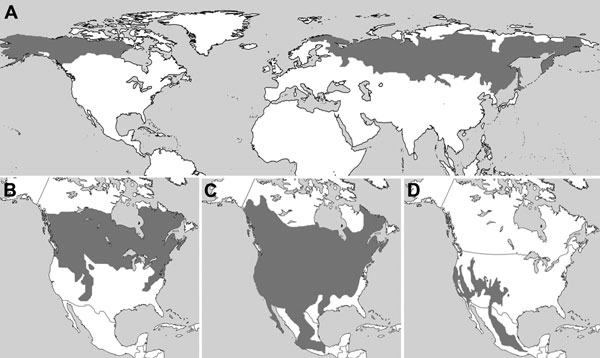Volume 19, Number 12—December 2013
Dispatch
Powassan Virus in Mammals, Alaska and New Mexico, USA, and Russia, 2004–2007
Figure 2

Figure 2. . Ranges (gray) of A) northern red-backed vole (Myodes rutilus), B) southern red-backed vole (M. gapperi), C) deer mouse (Peromyscus maniculatus), and D) piñon mouse (P. truei), United States, Russia, and Canada. Major range overlap between the 4 species found with deer-tick virus–reactive antibodies suggests that the responsible virus may have access to competent amplifying hosts throughout North America. Panel A was based on the International Union for Conservation of Nature and Natural Resources Red List (www.iucnredlist.org/) and panels B–D were based on the Smithsonian National Museum of Natural History, North American Mammals (www.mnh.si.edu/mna/main.cfm).
Page created: November 19, 2013
Page updated: November 19, 2013
Page reviewed: November 19, 2013
The conclusions, findings, and opinions expressed by authors contributing to this journal do not necessarily reflect the official position of the U.S. Department of Health and Human Services, the Public Health Service, the Centers for Disease Control and Prevention, or the authors' affiliated institutions. Use of trade names is for identification only and does not imply endorsement by any of the groups named above.